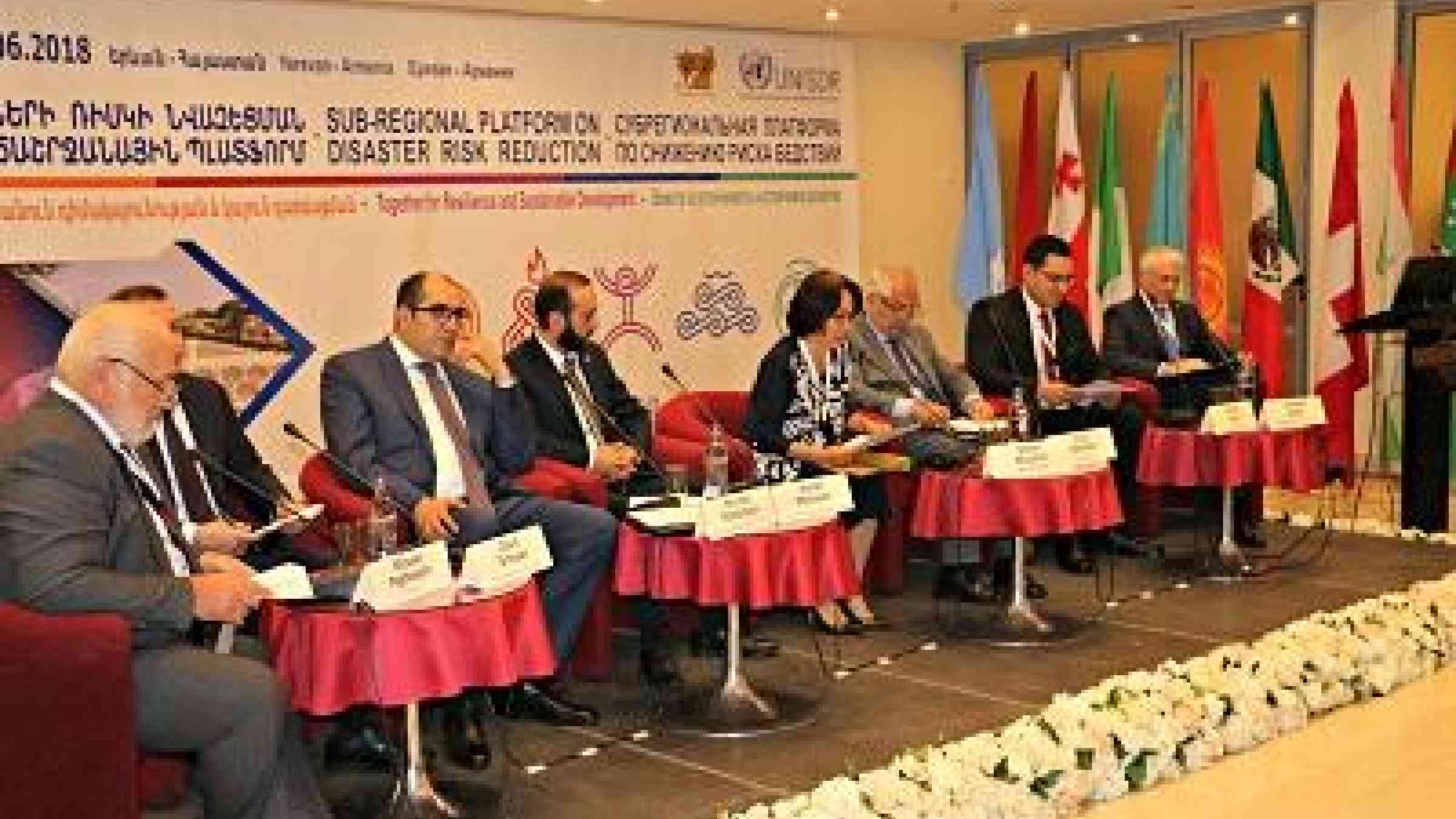Armenia hosts DRR discussions

YEREVAN, 27 June 2018 - Representatives from six countries in Central Asia and the South Caucasus are meeting for two days in the Armenian capital, Yerevan, to discuss progress in implementing the global plan for reducing disaster losses, the Sendai Framework for Disaster Risk Reduction 2015-2030.
More than 200 representatives of governments, civil society, United Nations and the private sector are examining the increasing impact of extreme weather events and climate change and the risks from potential man-made hazards.
The 2018 Sub-Regional Platform on Disaster Risk Reduction has brought together delegates from Armenia, Kazakhstan, Kyrgyzstan, Tajikistan, Turkmenistan and Uzbekistan under the theme: “An integrated platform for sustainable development and building resilience.”
Delegates in the region adopted a road map two years ago in Dushanbe, Tajikistan, and are now reviewing progress, best practice and challenges with a particular focus on Sendai Framework target (e) which seeks an increase in the number of countries with national and local strategies for disaster risk reduction by 2020.
Special Representative of the UN General-Secretary for Disaster Risk Reduction, Ms. Mami Mizutori opened the event, welcoming the region’s strong engagement on reporting against the Sendai Framework’s targets.
Ms. Mizutori emphasized the importance of making future investments risk proof. “With the major investments that your countries are undertaking in building new housing, schools, infrastructure and transport routes, there is real opportunity. Ensuring your decisions now take into account the risk and potential vulnerability is fundamental. It will help deliver investments that are resilient to disasters and therefore sustainable,” she said.
Regional cooperation is a strong theme of the platform. First Deputy Prime Minister of Armenia, Mr. Ararat Mirzoyan, underlined that “disasters know no borders and that regional cooperation is key.”
Armenia’s Minister of Emergency Situations, Mr. Hrachya Rostomyan, echoed calls for strengthening international and regional cooperation. He recalled the devastating Spitak earthquake 30 years ago and thanked all the countries who stood by and supported Armenia. He said: “We have learnt important lessons and have a new rigorous system for disaster risk management.”
The Minister of Defence Mr. Davit Tonoyan, said: “Disaster risk reduction cannot be tackled solely by the Ministries of Emergency Situations. We need to work on environmental protection and the wider security enterprise. We need a whole of government approach to disaster risk reduction and resilience building efforts.”
On Monday, Ms. Mizutori addressed members of the Armenian National Assembly, and said that parliamentarians can use their influence to ensure that a risk-sensitive approach permeates the entire decision-making process, notably when it comes to public investment, finance and budgets.
"Reducing disaster risk pays dividends, and the value-for-money argument is not difficult to make but needs to be repeated frequently," she said.
Her remarks led to a lively debate on legislation for disaster risk reduction and related matters.